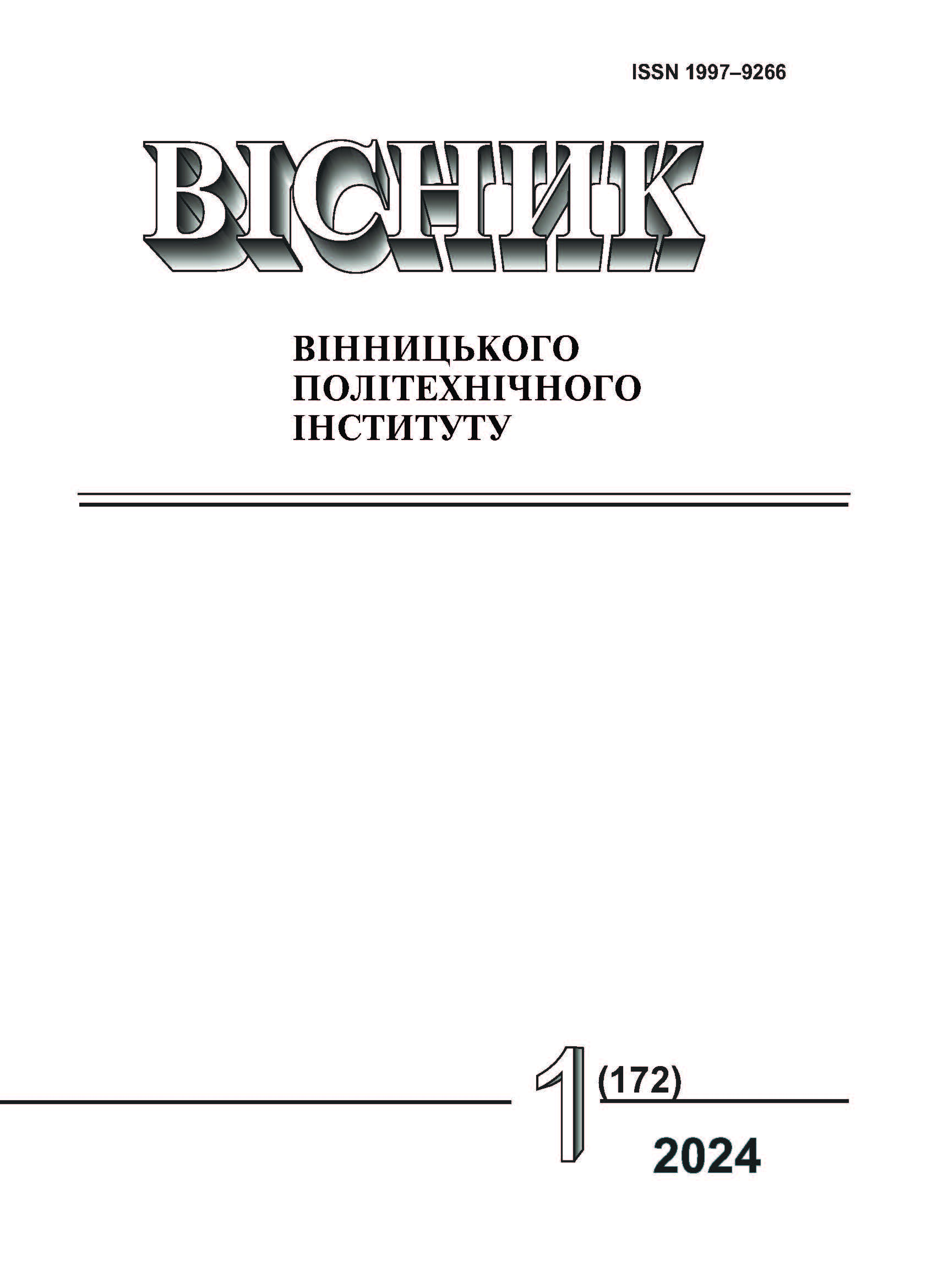Research of Higuсhi Fractal Dimension Impact in the Task of Biometric Verification of the User
DOI:
https://doi.org/10.31649/1997-9266-2024-172-1-121-127Keywords:
motion patterns recognition, biometric verification, recurrent autoencoders, transformer autoencoders, higuchi fractal dimensionAbstract
Biometric verification systems are pivotal for identifying individuals based on their physiological or behavioral characteristics, offering enhanced security over traditional authentication methods. Despite their advantages, the accuracy and reliability of biometric verification present challenges, necessitating innovative approaches for feature extraction and representation. This paper proposes integrating Higuchi’s Fractal Dimension (HFD) as an additional feature in autoencoder architectures to enhance feature extraction processes in biometric verification tasks. The incorporation of HFD, known for capturing signal complexity and self-similarity, is anticipated to improve the discriminative power of extracted features, thereby enhancing overall verification efficacy.
The study focuses on biometric verification using sensor signals, aiming to examine and analyze the impact of adding additional features such as HFD on biometric verification results and evaluation metrics.
In conclusion, the integration of Higuchi Fractal Dimension (HFD) features into autoencoder-based models for biometric verification tasks demonstrates a promising approach to enhancing the accuracy of biometric systems. This research confirms the hypothesis that additional signal information, provided by HFD features, substantially aids models in effectively distinguishing biometric patterns. However, computational costs associated with HFD calculations pose a challenge, particularly for applications requiring low latency. Future work should focus on developing optimized algorithms for HFD computations or exploring alternative methods to capture signal complexity with lower computational overheads. This study lays the groundwork for extended use of fractal dimensions in biometric verification, suggesting a fruitful direction for future research in improving the accuracy and efficiency of biometric systems through advanced signal processing methods.
References
S. Kesić, and S. Z. Spasić, “Application of Higuchi’s fractal dimension from basic to clinical neurophysiology: A review,” Comput Methods Programs Biomed, vol. 133, pp. 55-70, 2016. https://doi.org/10.1016/j.cmpb.2016.05.014 .
F. Lopez-Caracheo, A. B. Camacho, C. A. Perez-Ramirez, M. Valtierra-Rodriguez, A. Dominguez-Gonzalez, and J. P. Amezquita-Sanchez, “Fractal Dimension-based Methodology for Sudden Cardiac Death Prediction,” in 2018 IEEE International Autumn Meeting on Power, Electronics and Computing (ROPEC), 2018, pp. 1-6. https://doi.org/10.1109/ROPEC.2018.8661371 .
R. Piña-Vega, M. Valtierra-Rodriguez, C. A. Perez-Ramirez, and J. P. Amezquita-Sanchez, “Early Prediction of Sudden Cardiac Death Using Fractal Dimension and Ecg Signals,” Fractals, vol. 29, no. 03, pp. 2150077, Dec. 2020, https://doi.org/10.1142/S0218348X21500778 .
P. F. H. N. Gustavo Gallegos Dávalos, “Application of fractal algorithms to identify cardiovascular diseases in ECG signals,” Advances in Science, Technology and Engineering Systems Journal, vol. 4, no. 5, pp. 143-150, 2019, https://doi.org/10.25046/aj040519 .
S. Sharanya, and S. P. Arjunan, “Fractal Dimension Techniques for Analysis of Cardiac Autonomic Neuropathy (Can),” Biomed Eng (Singapore), vol. 35, no. 03, pp. 2350003, Feb. 2023, https://doi.org/10.4015/S1016237223500035 .
M. K. M. Rabby, A. K. M. K. Islam, S. Belkasim, and M. U. Bikdash, “Wavelet transform-based feature extraction approach for epileptic seizure classification,” in Proceedings of the 2021 ACM Southeast Conference, ACM SE ‘21. New York, NY, USA: Association for Computing Machinery, 2021, pp. 164-169. https://doi.org/10.1145/3409334.3452078 .
M. Radhakrishnan, D. Won, T. A. Manoharan, V. Venkatachalam, R. M. Chavan, and H. D. Nalla, “Investigating electroencephalography signals of autism spectrum disorder (ASD) using Higuchi Fractal Dimension,” vol. 66, no. 1, pp. 59-70, 2021, https://doi.org/10.1515/bmt-2019-0313 .
K. Mukai, and I. Nakanishi, “Introduction of Fractal Dimension Feature and Reduction of Calculation Amount in Person Authentication Using Evoked EEG by Ultrasound,” in 2020 IEEE Region 10 Conference (TENCON), 2020, pp. 567-572. https://doi.org/10.1109/TENCON50793.2020.9293921 .
S. Shariatmadari, S. Al-maadeed, Y. Akbari, I. Rida, and S. Emadi, “Off-line Persian Signature Verification using Wavelet-based Fractal Dimension and One-class Gaussian Process,” in 2018 NASA/ESA Conference on Adaptive Hardware and Systems (AHS), 2018, pp. 168-173. https://doi.org/10.1109/AHS.2018.8541467 .
M. E. Cimen, O. F. Boyraz, M. Z. Yildiz, and A. F. Boz, “A new dorsal hand vein authentication system based on fractal dimension box counting method,” Optik (Stuttg), vol. 226, рp. 165438, 2021, https://doi.org/10.1016/j.ijleo.2020.165438 .
M. I. Quraishi, A. Das, and S. Roy, “A novel signature verification and authentication system using image transformations and Artificial Neural Network,” in 2013 World Congress on Computer and Information Technology (WCCIT), 2013, pp. 1-6. https://doi.org/10.1109/WCCIT.2013.6618680 .
M. Farhan, L. George, and T. Hussein, “Fingerprint Identification Using Fractal Geometry,” International Journal of Advanced Research in Computer Science and Software Engineering, vol. 4, pp. 52-61, Feb. 2014.
M. Havrylovych, V. Danylov, and A. Gozhyj, “Comparative analysis of using recurrent autoencoders for user biometric verification with wearable accelerometer,” in CEUR Workshop Proceedings, 2020.
M. Havrylovych, and V. Danylov, “Research on hybrid transformer-based autoencoders for user biometric verification,” System research and information technologies, no. 3, pp. 42-53, Sep. 2023. https://doi.org/10.20535/SRIT.2308-8893.2023.3.03 .
T. Higuchi, “Approach to an irregular time series on the basis of the fractal theory,” Physica D, vol. 31, no. 2, pp. 277-283, 1988, https://doi.org/10.1016/0167-2789(88)90081-4 .
J. A. Wanliss, and G. E. Wanliss, “Efficient calculation of fractal properties via the Higuchi method,” Nonlinear Dyn, vol. 109, no. 4, pp. 2893-2904, 2022, https://doi.org/10.1007/s11071-022-07353-2 .
P. O. Casale and P. P. Radeva, Activity Recognition from Single Chest-Mounted Accelerometer, 2014.
H. Kojima, “HFDA,” GitHub repository, 2023. [Electronic resource]. Available: https://github.com/hiroki-kojima/HFDA . Accessed: 20 February 2024.
Downloads
-
PDF (Українська)
Downloads: 39
Published
How to Cite
Issue
Section
License

This work is licensed under a Creative Commons Attribution 4.0 International License.
Authors who publish with this journal agree to the following terms:
- Authors retain copyright and grant the journal right of first publication.
- Authors are able to enter into separate, additional contractual arrangements for the non-exclusive distribution of the journal's published version of the work (e.g., post it to an institutional repository or publish it in a book), with an acknowledgment of its initial publication in this journal.
- Authors are permitted and encouraged to post their work online (e.g., in institutional repositories or on their website) prior to and during the submission process, as it can lead to productive exchanges, as well as earlier and greater citation of published work (See The Effect of Open Access).





